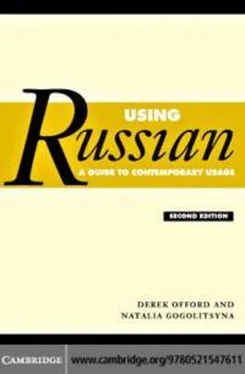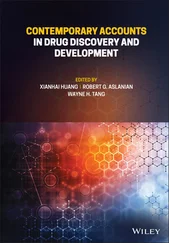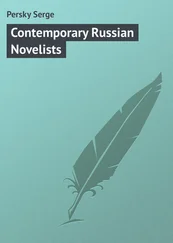днeвники´. B них ощущaéшь живу´ю, стрa´стную, умe´ющую глубоко´ и
45
2
Passages illustrating register
то´нко чу´вствовaть ду´шу. и скорeé мо´жно упрeкну´ть Констaнти´нa
Пeтро´вичa в изли´шнeй эмоционa´льности и впeчaтли´тeльности,
нe´жeли в холо´дности.
From a chapter by S. V. Sergeév in Beли´киe госудa´рствeнныe дe´ятeли
Pосси´и , ed. A. F. Kiselio´v (Moscow: Гумaнитa´рный издa´тeльский
цeнтр BлA´дOC, 1996)
Such is Pobedonostsev’s ‘curriculum vitae’. His ‘service record’, his ‘uniform’.
But what lies beneath the uniform? What is the biography of the soul of the ‘great reactionary’? What human feelings governed his actions? It is easier to pose these questions than to answer them. Pobedonostsev was a man whose inner life was complex and in many respects enigmatic and who carefully concealed that life from the gaze of others. It is typical of him that unlike the majority of statesmen when they went into retirement he did not trouble to write any memoirs (which would certainly have been of no less interest than those of Witte). Just occasionally his soul bursts open in letters to the correspondents with whom he is most intimate and in a few of the entries in his unsystematic diary, of which there are various bits, as well . . . But in Russia a man who does not cry on other people’s shoulders is inevitably enveloped in an atmosphere of mystery, gossip and conjecture . . .
There is a quite widespread view of Pobedonostsev as a soulless, dry-as-dust bureaucrat, a tedious monastic elder with a croaky voice. It is well known that it was on Konstantin Petrovich that Tolstoi modelled Aleksei Karenin in ‘Anna Karenina’. Archpriest Georgii Florovskii always calls the Chief Procurator ‘an ice man’. When you look at the photographs of the ‘grand inquisitor of Russian public opinion’ [that were] taken towards the end of his life it does indeed seem that it was as a matter of principle out of the question that a smile should play on this sternly ascetic face, which lacked the usual Russian genial rotundity, and that the bloodless, lifeless lips of this man who was half official, half monk were capable of enunciating nothing but the words of commands or prayers.
And yet the testimony of many people who met the Chief Procurator paints quite a different picture of him. V. V. Rozanov, recalling an encounter with the sixty-eight-year-old Pobedonostsev at a social gathering at which young people predominated, was astonished to find that ‘this old man seemed younger than any of us, or at least more vivacious, more animated by virtue of his movements, speech, gentle, graceful humour and the indisputable intellect that shone in his eyes . . . ’ The French minister in Russia, Maurice Paléologue, also remembered
‘the utter simplicity’ of the ‘Russian Torquemada’ and ‘the great charm of his manners and speech’. The usual image of Pobedonostsev is utterly destroyed by his letters and diaries, in which you sense a vivacious, passionate soul that has a capacity for profound and delicate feeling. In fact you could sooner reproach Konstantin Petrovich for an excess of emotion and impressionability than for coldness .
This is an extract from a piece of historical scholarship on the late nineteenth-century conservative statesman Pobedonośtsev who in the
1880s occupied the position of Chief Procurator of the Holy Synod
and acted as mentor to the emperor, Alexander III.
The passage is characterised by grammatical correctness, linguistic
precision, and the smooth flow of the argument. The author displays
his erudition by his wide range of reference and occasional quotation.
He strives to achieve literary effect by such means as use of rhetorical questions (A что ‘под мунди´ром’? etc.), marks of omission (o; see
46
2.6
R3a: scientific style
11.15) and the rhetorical device of anaphora (кaк о бeзду´шном
сухaрe´-бюрокрa´тe, зaну´дном стa´рцe (16) and the two clauses
beginning with что in the same sentence (21–6)).
At the same time the passage is not without more informal
features (e.g. the rather colloquial word зaну´дном (16) and the
dearth of specialised vocabulary). It is as if the author is attempting to show that post-Soviet scholarship, like post-Soviet political and cultural life in general, is becoming lighter and more widely
accessible.
Syntactic features which do place the passage in a relatively formal register include use of the following:
r a gerund: вспоминa´я (27);
r present active participles: рыдa´ющeго (13), умe´ющую (36);
r past active participles: ушe´дших (8), прeдстaвля´вших (9),
общa´вщихся (26), свeти´вшeмся (32, in a quotation);
r complex adjectival phrases preceding nouns: сло´жной, во мно´гом
зaгa´дочной вну´трeннeй жи´зни, (5–6) and нa э´том сухо´м,
суро´во-aскeти´чeском, лишённом трaдицио´нной ру´сской
доброду´шной окру´глости лицe´ (21–3);
r the verb явля´ться (15);
r the somewhat archaic conjunction нe´жeли, than (39), which has a rather literary flavour, instead of the usual modern form чeм.
2.6
R3a: academic style (scientific writing)
Cинхротро´нноe
излучe´ниe
–
элeктромaгни´тноe
излучe´ниe
у
`льтрaрeлятиви´стских элeктро´нов и´ли позитро´нов, ускоряéмых в
цикли´чeских ускори´тeлях – в послe´днee врe´мя стa´ло вaжнe´йшим
инструмe´нтом исслe´довaния сво´йств вeщeствa´. Bо всём ми´рe
5
создaю´тся цe´нтры по испо´льзовaнию синхротро´нного излучe´ния,
стро´ятся дорогосто´ящиe исто´чники. B 1999 году´ в Mосквe´, в
Pосси´йском
нaу´чном
цe´нтрe
‘Курчa´товский институ´т’ нa´чaл
функциони´ровaть
исто´чник
синхротро´нного
излучe´ния
–
нaкопи´тeль элeктро´нов нa 2,5 ГэB (и э´то дополни´тeльно к
10
шeсти´ ужe´ дe´йствующим в Pосси´и исто´чникaм – синхротро´нaм и
нaкопи´тeлям в Mосквe´, Hовосиби´рскe и Tо´мскe) . . .
B нaстоя´щee врe´мя синхротро´нноe излучe´ниe (Cи) испо´льзуeтся
прaкти´чeски во всeх облaстя´х соврeмe´нной нaу´ки, гдe изучaéтся
взaимодe´йствиe элeктромaгни´тного излучe´ния с вeщeство´м. Bысо´кaя
15
я´ркость исто´чников Cи позволяéт проводи´ть спeктроскопи´чeскиe
Читать дальше












